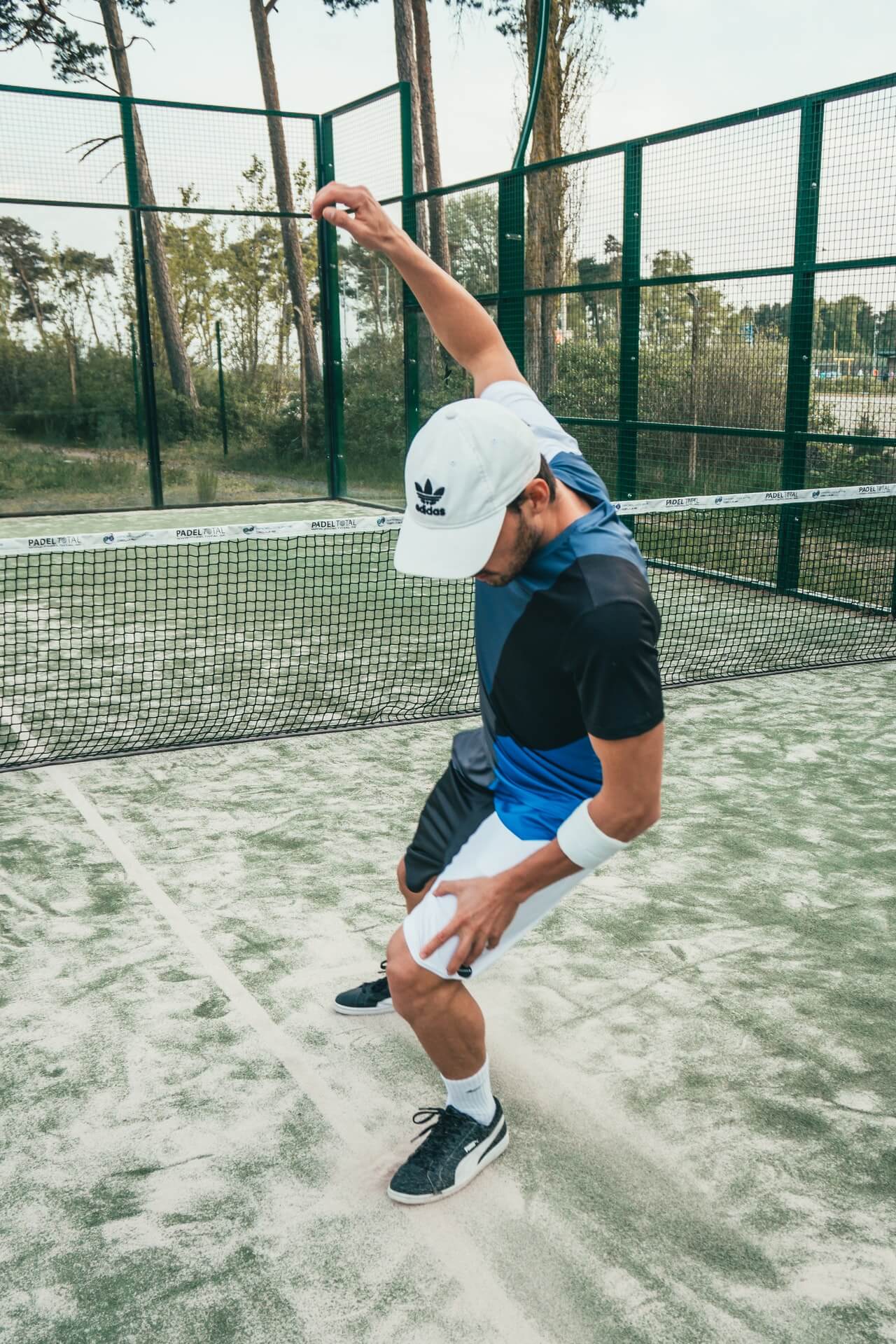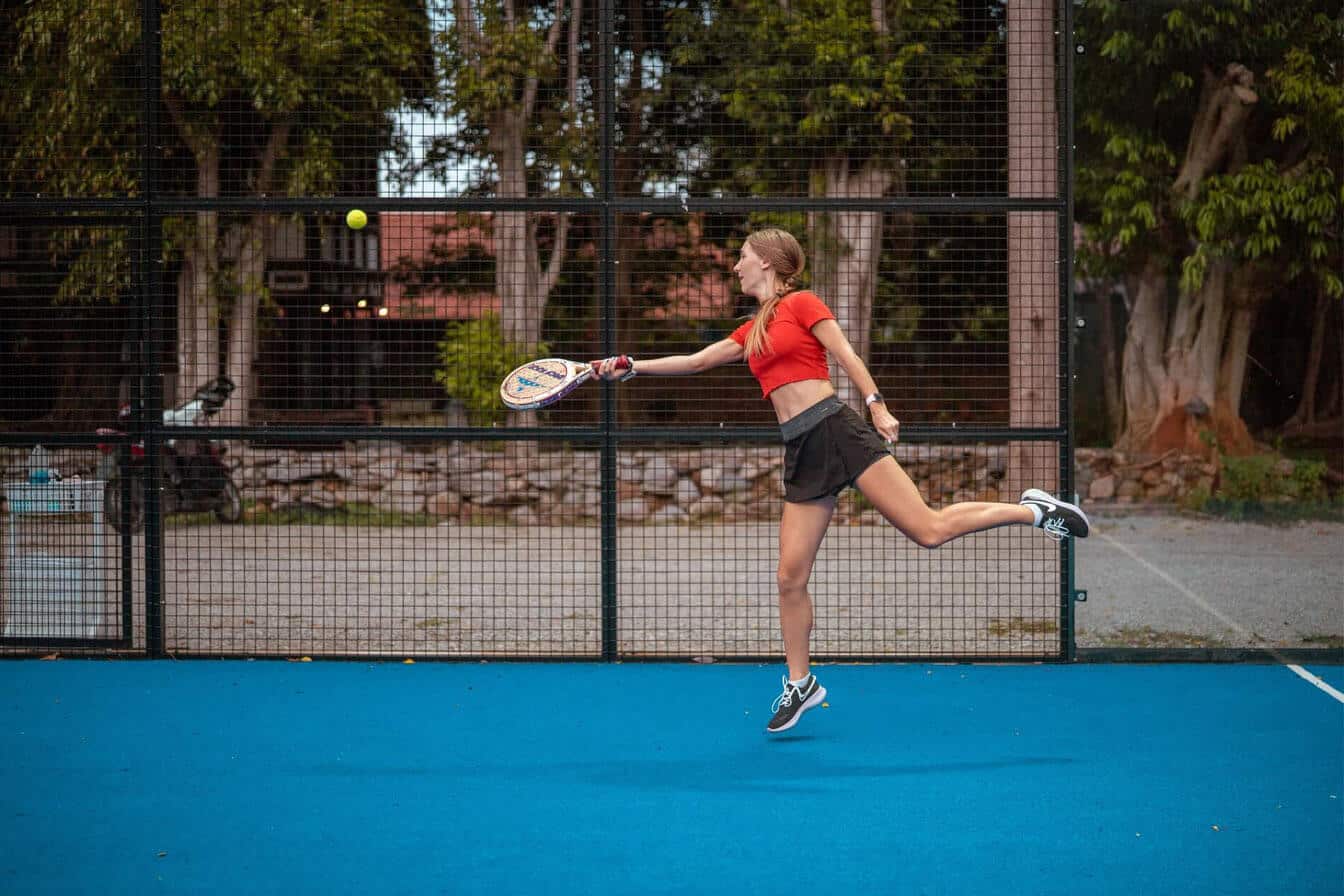Have you been struck with a padel elbow? Don’t worry – you’re in the right place to treat it. In this article, we’ll go over the following:
- Why do you get padel elbow?
- 4 tips on how to combat padel elbow
- Different types of symptoms
- 4 exercises for padel elbow rehab
Vamos!
Content of this page
Why do you get padel elbow?
Lateral epicondylitis is an overuse injury that leads to inflammation of the outer tendon and muscle attachment of the elbow joint. The inflammation is caused by bending the wrist upwards and/or twisting it sideways repeatedly.
Although padel elbow is an overuse injury, this does not mean that the injury necessarily occurs after prolonged abrasion and overuse; the injury can also occur after only one or a few padel sessions if the situation is unfavorable.
Padel elbow is one of the most common padel injuries.
4 tips on how to counteract padel elbow
It is always recommended to choose a racket with a soft core that dampens the vibrations of your racket. Also, use a good vibration dampener and an ergonomic vibration dampening grip for your padel racket.
Stretch both the extensor muscles of the forearm (on the upper side of the forearm) and the flexor muscles (on the lower side of the forearm). Do not only stretch the muscles after a training session but also continuously 2-3 times a day.
Using a good epicondylitis guard or taping the area with kinesiology tape is also recommended to give the muscles and tendons extra much-needed support. Also, play shorter sessions and less frequently at first and then slowly increase if you would like.
Tips 1: Use protection to counteract
A good epicondylitis guard is a really good investment for those who want to do everything they can to try and counteract a troublesome and hard-to-heal padel elbow. As there are a variety of epicondylitis protectors on the market, it’s also important to choose one that suits you and your needs.
Make sure you choose a cover that you feel will also allow you to perform all strokes and directional changes without either inhibiting your padel playing or causing pain in the elbow joint.
Tips 2: Use vibration-dampening accessories
Although many padel rackets have different types of features and designs, with any racket you can always dampen the vibration that occurs with a good vibration dampening accessory. Several different ergonomic grip pads that dampen vibration are available just as they are for accessories like vibration dampeners.
A vibration dampener is always attached between the actual gripping surface and the hitting surface of a racket and provides good effect to both reduce the vibration in your racket just as it also helps to reduce the risk of a padel elbow occurring.
Our tip:
Tips 3: Choose the right padel racket (large sweetspot and soft core that absorbs vibrations)
Choosing the right padel racket with the right characteristics is always important. For anyone who also makes it a priority to do everything possible to avoid the occurrence of a padel elbow, it is particularly important to choose a padel racket with a soft core and a large sweetspot.
A padel racket with a soft core will also absorb and reduce the vibration that occurs during the stroke. Again, the soft core and the result of the minimal vibration reduce the risk of suffering a padel elbow.
Our tip:
Tips 4: Stretch the top and bottom of the forearm
Stretch both the extensor muscles of the forearm (on the upper side of the forearm) and the flexor muscles (on the lower side of the forearm). Do not only stretch the muscles after a training session but also continuously 2-3 times a day.
Symptom of padel elbow
A padel elbow can have several troublesome and often unfortunately long-lasting symptoms. The most obvious symptom is that it is usually difficult to grip or squeeze various objects, as there is usually a sudden painful sensation and/or a feeling of powerlessness in the outer tendon and muscle attachment of the elbow.
Turning the forearm inwards and upwards (called supination) so that the palm is eventually turned upwards also usually produces the same unpleasant sensation.
Radiating pain down the forearm towards the fingers is also not uncommon in padel elbow. It can also be common to wake up at night with pain in the elbow when the arm is twisted, and during the night it can also be difficult to find a comfortable resting position for the arm.
Exercises for padel elbow rehab
Stretching the extensor muscles on the upper side of the forearm on a daily basis (preferably 2-3 times/day) is always recommended. When stretching the muscle, the thumb of the other hand can simultaneously massage the muscle on the injured side to further increase blood circulation and to try to improve and speed up the rehabilitation process.
Be careful to massage only the muscle and never directly over the painful skeletal part of the tendon and muscle joint as this is usually very sensitive to touch.
A lighter dumbbell can also be used if you sit on a chair and let the underside of your forearm rest against your leg. Initially hold the dumbbell straight in a neutral position and then slowly extend the wrist downwards, slowly return to a straight neutral position and repeat the exercise. Do the exercise 1-2 times/day and 3 x 10 times per session.
The exercise can then be repeated by resting the top of the forearm against the leg while holding the dumbbell. Again, start from a straight neutral position and then bend the dumbbell upwards towards you and slowly return to neutral, then repeat the exercise.
Here are more tips on exercises for your padel elbow rehab:
Tips 1: Stretching the wrist
Softening and gently stretching the wrist can be done by bending, stretching, rotating, and twisting the wrist sideways. Hold the stretching wrist still in a static (but stretched) position that feels comfortable while the other hand gently presses to further increase the stretching effect, 2 times per position for about 10-15 seconds.
Pure mobility training can also be done for the wrist and its various changes of direction without the other hand helping to increase the stretching effect. Pure mobility training for the wrists is particularly important as a warm-up phase before it is time for a padel session.
Tips 2: Stretching the forearm
Stretch the extensor muscles of the forearm by standing up while assuming that, with the arm completely straight, you are resting only the hand against a table. Keep the top of the forearm pointing forward while bending the wrist inwards (palm and fingers pointing towards you) as you place the top of the back of the hand on the surface of the table. Hold for 20-25 seconds and repeat 2-3 times.
Then stretch the flexor muscles of the forearm in a similar way, but with the underside of the forearm (which was just pointing inwards) pointing outwards and straight ahead away from you. Place the entire palm of your hand on the table so that your fingers point inwards towards you. Hold for 20-25 seconds and repeat 2-3 times.
Tips 3: Stretch with the towel
Stretching, or rather rehabilitating, your padel elbow with a towel can also be done in a couple of different ways. You can roll up the towel into a roll or a small ball and squeeze it for about 10 seconds, then release the grip and repeat the exercise 3-4 times on each side. 1-2 times a day. A soft foam rubber ball can also be used if you prefer.
A towel can also be used to increase the torsional strength of the forearm muscles. Roll up a towel and wrap both hands around the outer edges of the towel (with the tops of the hands facing upwards from the start).
Then rotate your hands in opposite directions for about 10 seconds, switching the direction of rotation every other time and repeating for 10 seconds. Do the exercise 4-5 times per direction and 1-2 times daily.
Tips 4: Använd en lättare hantel
A lighter dumbbell can also be used if you sit on a chair and let the underside of your forearm rest against your leg. Start by holding the dumbbell straight in a neutral position and then slowly extend your wrist downwards, slowly return to a straight neutral position and repeat the exercise.
Do the exercise 1-2 times/day and 3 x 10 times per session. The exercise can then be repeated by resting the top of the forearm against the leg while holding the dumbbell.
Again, start from a straight neutral position and then bend the dumbbell upwards towards you and slowly return to neutral, then repeat the exercise.
How long is rehab required for padel elbow?
This is very much an individual question. However, it is not uncommon for the healing time for a padel elbow to be reasonably lengthy, as long as 6-12 months. However, the healing time can be shortened considerably by resting in the first place and not continuing to overuse the inflamed tendon and muscle joint.
Shockwave therapy is an effective treatment method for padel elbow (usually at least 4-5 treatments may be needed) but ultrasound, acupuncture, TENS, and anti-inflammatories are all common treatment methods when a padel elbow has developed. Cortisone injections are also used as a treatment method for padel elbow in healthcare, but not as frequently as in the past.
Frequently asked questions about padel elbow
Below are the most frequently asked questions about padel elbow. We have answered the questions as concretely as possible.







